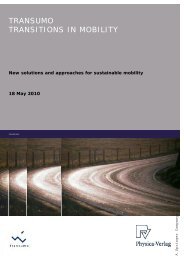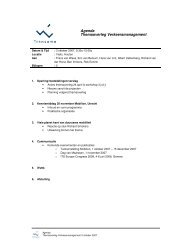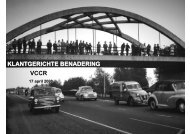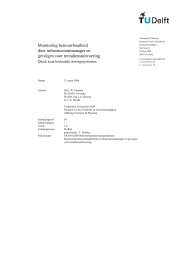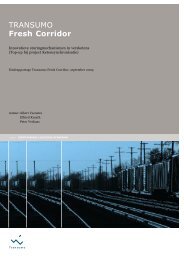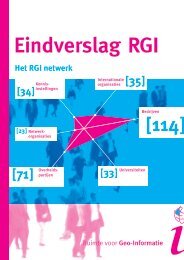Casestudie Breakdown prediction Contell PILOT - Transumo
Casestudie Breakdown prediction Contell PILOT - Transumo
Casestudie Breakdown prediction Contell PILOT - Transumo
You also want an ePaper? Increase the reach of your titles
YUMPU automatically turns print PDFs into web optimized ePapers that Google loves.
information of typical frictional behavior (e.g. linear friction vs. non linear friction).<br />
([Sick00], p. 5-7)<br />
Besides these specific knowledge models, there are artificial neural networks. These<br />
networks adopt the general functioning of a human brain. This means that an artificial<br />
neural network has to be trained with sample or historical data in advance, so that it<br />
is able to acquire knowledge. After this training, such a network is able to judge<br />
situations as regular or irregular like a human brain. ([Hagen97], p. 5-6)<br />
As this approach is able to learn on its own due to training data or past behavior, it is<br />
much more flexible, than a predefined knowledge model. 32 Both, knowledge models<br />
and trained artificial neural networks can be used as a knowledge basis for expert<br />
systems, which have the task to decide in an automated way (e.g. [Krems94],<br />
[Heuer97]).<br />
4.3 Current State within the Setting of Measurement Data Analysis<br />
The last section 4.2 already introduced the current state of research within the setting<br />
of machinery condition monitoring, which was faced with similar requirements, like<br />
sensor based temperature monitoring. This section will now focus on settings, in<br />
which analysis of time dependent data is used to detect changes and to predict<br />
upcoming behavior. The main focus lies on a generalized approach from Frank<br />
Daßler, which promises an early <strong>prediction</strong> of upcoming malfunctions without<br />
additional knowledge of the underlying setting ([Daßler95], p. 8).<br />
4.3.1 Basic Approaches<br />
Basic approaches are based on statistical methods. Descriptive statistical measures<br />
are used to get an aggregated overview of a datasets characterization (e.g. mean). In<br />
addition to that, these measures ease a comparison of different datasets (or different<br />
parts of a dataset) ([Eckey02], p. 41).<br />
Within many settings, time series analysis is applied to measurement data. Its main<br />
task is to discover structures and irregularities within a time sequence. By detecting<br />
structures, the time series analysis is not only able to describe regular behavior but<br />
also to predict the near future. 33 ([Chatfield04] p. 73-105)<br />
32 A detailed description of the functioning of an artificial neural network will be given in section 5.9.2.<br />
33 See section 5.5 for details<br />
46



